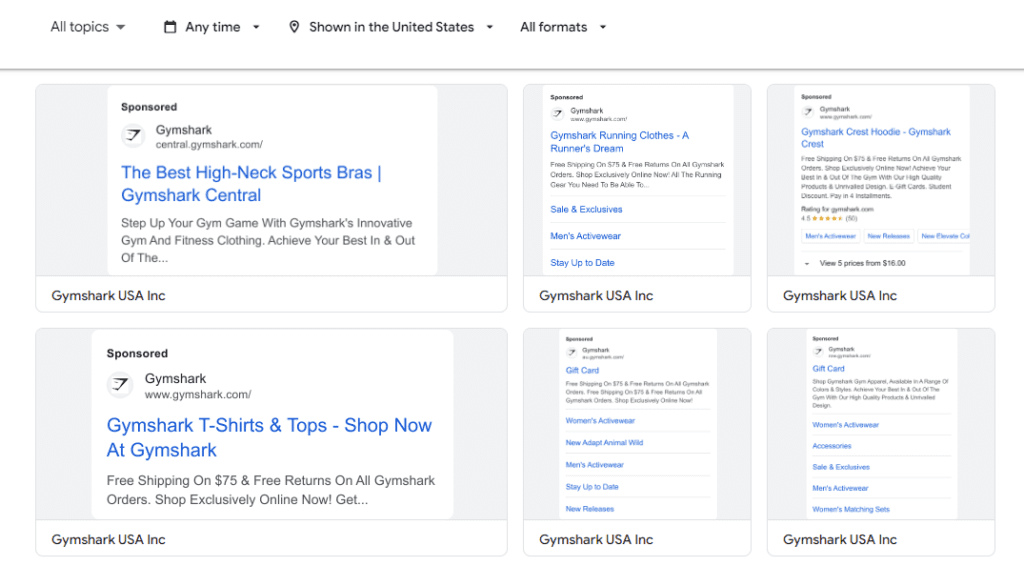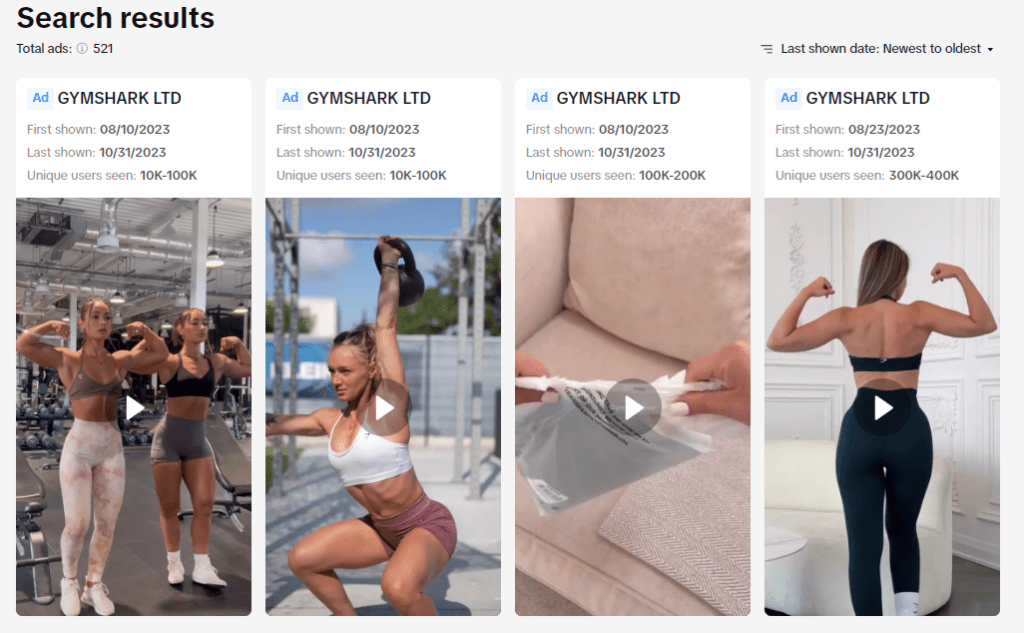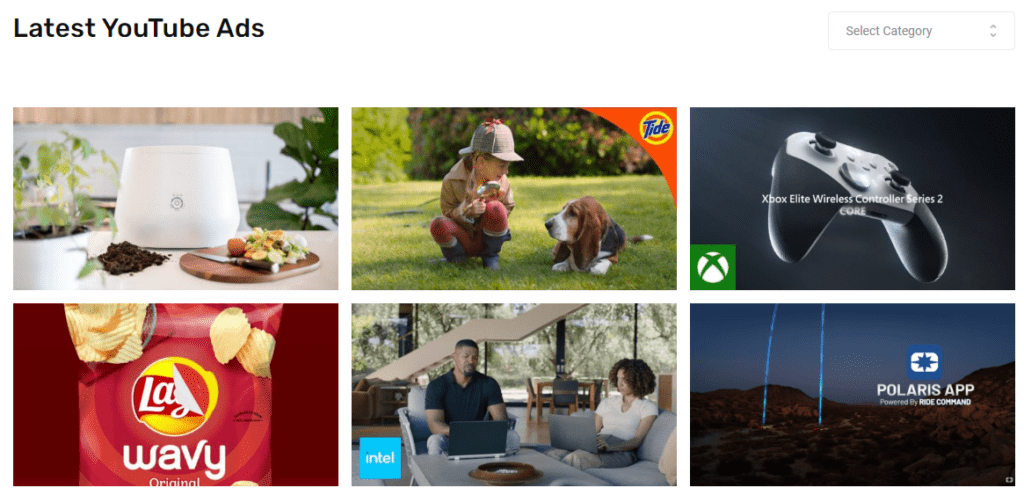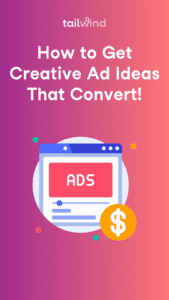[ad_1]

Unleashing creativity in advertising isn’t just about thinking outside the box — it’s about reimagining the box itself.
In today’s saturated market, the line between a campaign that mesmerizes and one that merely exists is creativity.
Sometimes you need an elaborate, detailed, high-tech visual. Other times…you can wing it with a screenshot of a Google Doc. The competition is high, and the ads landscape is changing every minute.
Want to know where to look for ad ideas? Or how to analyze the creative work of your competitors?
In case you answered yes — read on!
Understanding Creative Advertising
Definition of Creative Advertising
Creative advertising involves the use of original concepts, eye-catching visuals, and engaging content to capture the audience’s attention.
In today’s cluttered market, creative advertising is crucial to help you stand out from the competition and create a lasting impression on your target audience.
Creativity in advertisements comes in various forms such as storytelling, humor, visuals, or interactive elements.
By incorporating these elements, you can enhance the overall impact of your ad campaign and improve your chances of reaching your marketing goals.
Importance of Creativity in Ads
The importance of creativity in advertising cannot be overstated. It helps your brand differentiate itself from others and effectively communicates your message to your audience.
- Increased engagement: A creative ad is more likely to capture and retain the audience’s attention, leading to increased engagement and interaction with your brand.
- Better brand recall: Unique and innovative ads are memorable, which significantly improves brand recall and helps your audience associate your brand with a particular product or service.
- Higher conversion rates: Creative ads can effectively persuade and influence your audience, ultimately resulting in higher conversion rates and better return on investment.
- Emotional connection: Creativity in ads can evoke emotions in your audience that form a lasting connection between them and your brand.
Remember to always keep your target audience in mind when crafting creative ads to ensure they resonate with the audience’s interests and preferences.
Sources For Ad Research
At times, it may feel as if you already tried all the marketing angles, but we both know that it is not true.
When it comes to generating creative ad ideas, it helps to draw inspiration from multiple sources.
Here are some of them, with some points that you should pay increased attention to:
Facebook Ads Library

In the Facebook Ads Library, you can search for ads from a specific brand or view the most recent and trending ads.
By analyzing other ads, you can identify successful strategies and common themes, providing a strong foundation for your own creative ideas.
- Analyzing Competitor Strategies
- Look at the frequency and type of ads competitors are posting
- Pay attention to the creative elements like imagery, typography, and call-to-actions
- Go through their whole sales funnel
- Identifying Trending Formats
- Recognize the most popular ad formats and styles
- Explore different industries to glean cross-sectional insights
- Evaluating Engagement
- Analyze which ads receive more interaction
- Use these insights to gauge what could work for your campaign
For example, if you sell jewelry and search recent ads in Facebook Ads Library, you will see that a larger proportion of the ads are videos. That may inspire you to try a video ad, too.
Google Ads Library

Google Ads Library offers similar insights into ad campaigns. It is particularly useful for understanding Google’s platform-specific requirements and trends.
- Exploring Industry-specific Ads
- Filter ads based on specific industries or sectors
- Analyze the language and keywords that seem prevalent
- Understanding Platform-specific Requirements
- Adapt your ads according to Google’s unique platform requirements
TikTok Ads Library

TikTok Ads Library is an excellent resource for viewing short-form videos and understanding trends in both content and demographics.
Pay attention to the ad creative and how they use visual and audio elements to capture the audience’s attention.
- Leveraging Audio and Music
- Notice the use of music and sound in enhancing ad engagement
- Identify trending tracks and sounds used in successful ads
- Studying Demographic Trends
- Identify which age groups and demographics engage the most with different ads
- Tailor your content according to the demographic you aim to target
YouTube Ads Library

Utilize the YouTube Ads Library to gather ideas and inspiration for your video advertising efforts.
Observe the narrative style, pacing, and calls-to-action that make successful ads stand out.
- Dissecting Successful Video Ads
- Break down successful ads to understand their narrative structures and visual techniques
- Note the video lengths that seem more engaging and effective
- Adaptation to Different Devices
- Ensure ads are optimized and effective across various devices like mobiles, tablets, and desktops
Public Spaces and Billboards
Don’t overlook physical advertisements in public spaces, such as billboards and posters. They can give you unique ideas for your online ads.
Observe the style, messaging, and imagery to determine what captures attention and communicates the most effectively.
- Visual Appeal and Simplicity
- Assess the use of colors, fonts, and images to grab attention
- Note the simplicity and clarity in conveying the message
- Location-specific Insights
- Learn how ads are tailored and positioned based on locations and audience traffic
Award Winning Ads
Research award-winning ads, as they often showcase truly innovative and creative approaches.
Refer to awards like the Cannes Lions, Clio Awards, and D&AD for both inspiration and industry-standard examples of excellence.
- Analyzing Creative Excellence
- Study the innovative approaches and creative concepts that have been awarded
- Try to understand the judging criteria and why certain ads stood out
- Incorporating Best Practices
- Absorb effective strategies and successful creative executions for adaptation in your campaigns
Published Media And Magazines
They can offer a wealth of knowledge when it comes to ad research. Scour through industry-specific print materials and note the successes of prominent brands within your niche.
- Exploring Diverse Industries
- Extract insights from a variety of industries and niches
- Identify the design formats and copy strategies that seem prevalent
- Focus on Typography and Layout
- Learn the use of typography and layout in maximizing visual engagement and readability
Analyzing Competitors’ Ad Creatives and Engagement
By now, you have seen dozens (maybe hundreds?) of your competitors’ ads. Let’s discuss what you should actually look for and where you should pay increased attention:
Deciphering the Ad Creative
Every ad tells a story, and understanding this narrative is key. Look closely at:
- Visual Elements: Examine imagery, color schemes, typography, and overall design. Are they aiming for emotional appeal or focusing on straightforward information?
- Underlying Messages: Delve into the content. What emotions or needs are they targeting? Fear, aspiration, urgency, or perhaps humor?
Measuring Engagement Effectiveness
Engagement is more than just numbers — it’s about understanding the audience’s connection to the ad:
- Quantitative Metrics: High counts of likes, shares, and comments showcase an ad’s popularity.
- Qualitative Insights: The comments section, especially on platforms like Facebook or Instagram, provides invaluable feedback about what resonates with viewers.
Nature and Response to Engagement
Observing how competitors engage with their audience can provide insights into their broader strategy:
- Engagement Type: Are users primarily liking the ad, or are they actively sharing and commenting? High share counts often indicate deeper resonance.
- Feedback Management: Monitor how competitors respond to audience feedback. Are they addressing concerns? This can reveal their customer-centricity and adaptability.
In conclusion, a thorough analysis of competitors’ ad creatives and engagement not only reveals what they’re doing but also why they’re doing it. Such insights form a solid foundation for refining and innovating your advertising approach.
PRO TIP: Once you’ve mastered this type of analytical skill, use it in other channels —
by analyzing competitor emails or organic social posts.
Elements of Creative Ads
Message & Connection
To create an effective ad, your message must resonate with your audience. Focus on crafting a relatable message that speaks to your target market’s needs and desires. By establishing a connection with your audience, you will be more likely to hold their interest and inspire action.
Color & Design
Choose colors that reflect your brand’s personality and are appealing to your target audience. Use design elements like contrasting fonts and compelling visuals to create a harmonious yet engaging layout.
Humor in Ads
Adding humor to your ads can be an excellent tactic for capturing attention and creating a memorable ad. However, be careful not to overdo it. Strive to strike a balance between humor and your message. It’s important to ensure that the humor does not overshadow the primary message or appear offensive to your audience.
Call-to-Action
A call-to-action (CTA) is a vital element in any successful ad campaign. Your CTA should be clear, concise, and direct. Just as important as the words you use for your CTA is the design: use formatting like bold text, contrasting colors, and strategic placement to make your CTA stand out.
Creating Creative Ads
Idea Generation
To come up with creative advertising ideas, start by brainstorming with your team or even seeking input from your target audience.
Encourage open-mindedness and consider all suggestions, no matter how outlandish they may seem.
Experiment with different angles and use tools such as mood boards to help you visualize concepts.
The best ideas often come from unexpected places, so look for inspiration everywhere.
Use of Relevant Photos & Videos
Choose images that effectively represent your message and brand while also catching the viewer’s attention.
Use video templates as a starting point and customize them to fit your specific needs. Stock image websites can be a valuable resource for high-quality photos, but try to use authentic and distinctive visuals whenever possible.
Creating Engaging Content
Focus on crafting clear and concise copy that quickly grabs the viewer’s attention. Use bold text and bullet points as necessary to make your message easily scannable.
Encourage user-generated content by inviting your audience to share their experiences or perspectives on your product or service. This not only helps to create a sense of community but also adds credibility to your brand.
Interactive Elements
Introduce interactive elements to your ads to make them more immersive and help your audience connect with your brand.
Interactive components can range from simple clickable buttons or links to more complex experiences like quizzes or games.
Be thoughtful when integrating these features, and ensure that they’re compatible with different devices and platforms.
By incorporating interactive elements, you can encourage users to actively engage with your ads, which can lead to better retention and shareability.

Source link









![Can You Create a Wikipedia Page for Your Company? [Best Practices & Guidelines to Know] Can You Create a Wikipedia Page for Your Company? [Best Practices & Guidelines to Know]](https://i0.wp.com/imtools.pro/wp-content/uploads/2023/11/how-to-create-a-wikipedia-page.pngkeepProtocol.png?resize=150%2C150&ssl=1)
![How to Write a LinkedIn Recommendation in 2023 [Quick Tip + Examples] How to Write a LinkedIn Recommendation in 2023 [Quick Tip + Examples]](https://i0.wp.com/imtools.pro/wp-content/uploads/2023/11/write-linkedin-recommendation.pngkeepProtocol.png?resize=150%2C150&ssl=1)